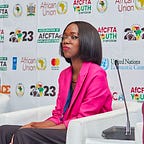U is for User Research.
Last year I took a human-centred design course, and learnt a few things that I actually didn’t know prior. One of these was user research. It’s one thing to design with the people that you are designing for, but how do you go about doing that? Conducting user research gives you some handles. This looks like, learning from the people (the ones who will actually use the product - in our case the bus owners, drivers, operators), learning from the experts (these might be people from the local government, Ministry of Transport), immersion (immersing yourself in the context and spending a day with the people in question) and analogous inspiration (this could be spending a day, or talking to people in a completely different industry in order to jog some problem-solving inspiration).
So how did we do?
- Learning from the people
We’ve spoken to at least two bus owners, one operations manager, and one bus manager who has moved into the courier space. It’s interesting developing questions without bringing up the solution you’re providing. We got quite a few insights and a deeper understanding of the pain points the owners and the operations manager face. One of them was political cadres at the bus stations and having to pay council fees (this was before the elections, when the previous administration still allowed such things). Although that has changed now, we also learned a lot about the way the bus system operates in Lusaka. Most bus owners have an amount that the bus drivers have to cash in every day, and whatever is made above that is the bus owners to take home. Some of the bus owners don’t actually see their buses the entire week, until cashing day, and they have no way of knowing where their buses actually are. There is route allocation but most drivers use the most populous routes as most drivers are permitted to drive across the city. There were some answers that also validated the need for our service as well, which was nice, it also made us think more deeply about the problem. The worst thing is creating a service that people don’t actually need.
2. Immersion:
We entered into a contract with a bus owner to manage his bus, and were able to ride the bus and see what it was to live a day in the life of a bus driver. It was interesting to see what routes were taken and where passengers were picked up in quieter moments of the day as well. We were also able to validate that the services offered would be worth paying for.
On the to-do list:
Analogous inspiration and learning from the experts.
We’ll make a point to speak to some people at the ministry of transport as well as the local council, in the near future, as we do have their emails.
So that’s that, for now. and even though time has been a factor in actually doing groundwork, being able to do research that moves the needle has been valuable, and exciting. Lately we’ve also been thinking about what the difference between a tech-enabled startup/business is, versus an actual tech startup/business, and where we would like to fall but maybe I’ll share those thoughts in the next update.
Adios.
